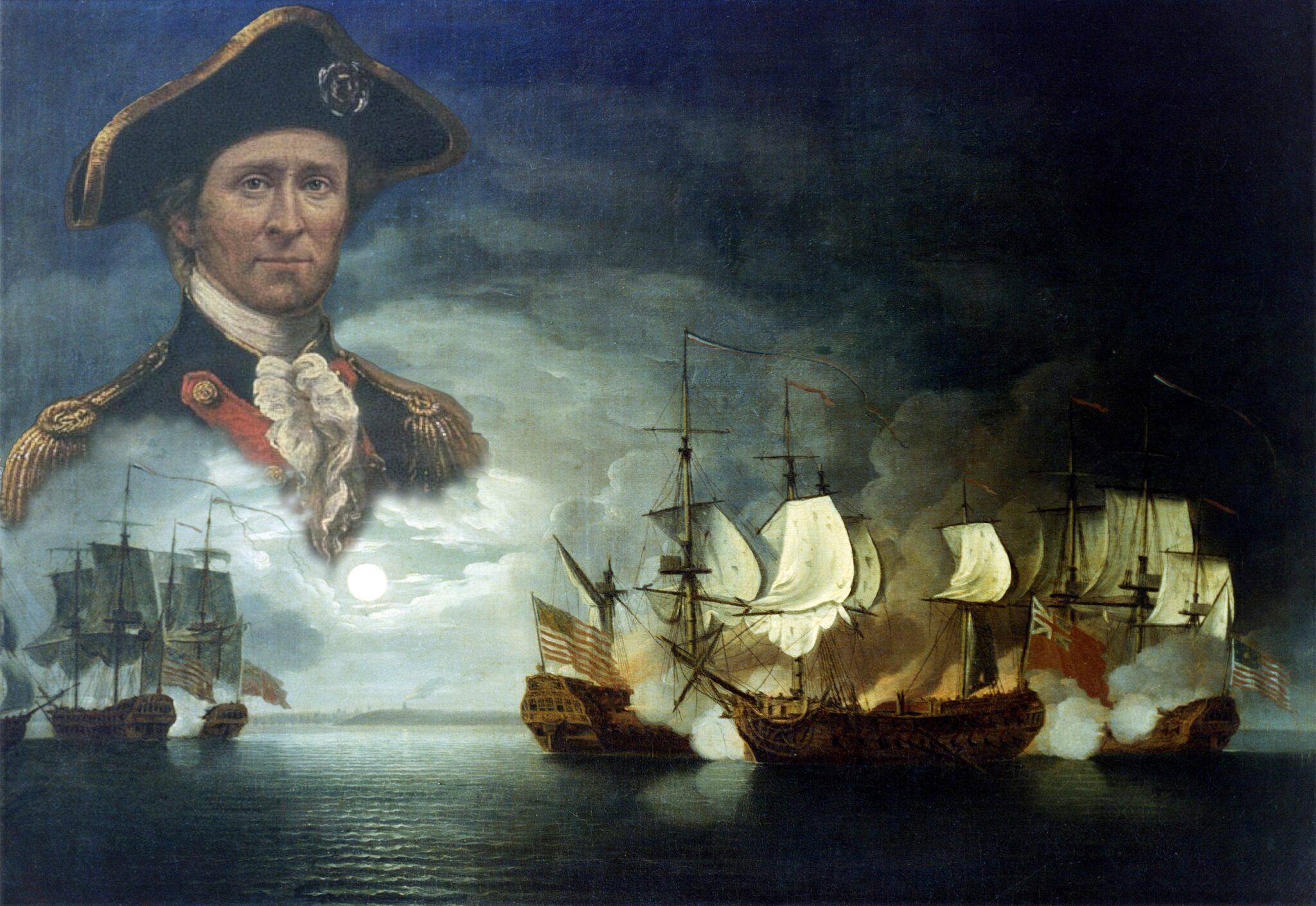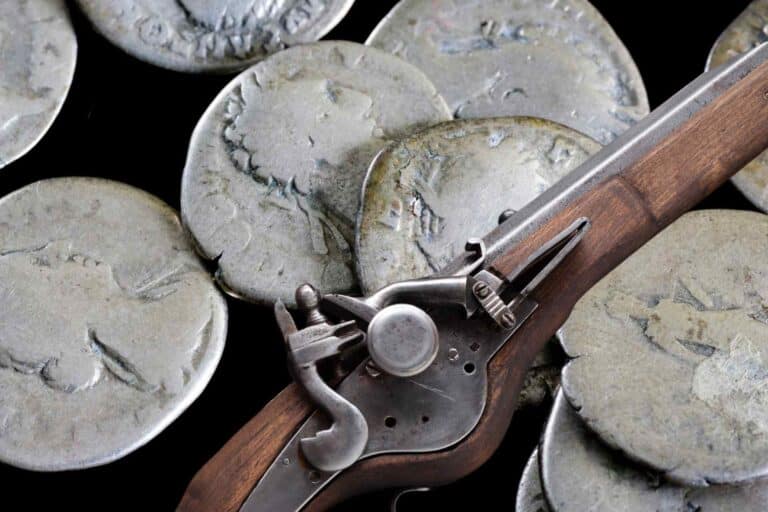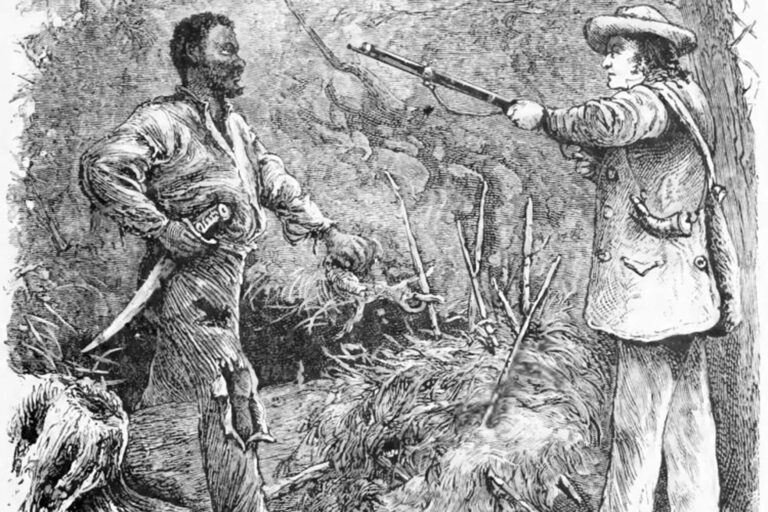How John Paul Jones Became an Naval Icon
“I have not yet begun to fight!” Letting these immortal words ring out above the roar of cannons and the crashing of his stricken ship, John Paul Jones became an American legend. Cornered by a heavily armed British warship in 1779, with his own ship on fire and many of his men wounded, Jones refused to surrender—and won the day. His audacity under fire and steely determination in the face of inevitable defeat created one of the most enduring myths of the American Revolution. Jones was not just a captain; he was the very personification of the young republic itself.
Raised in Scotland and tempered in a life of adventure on the high seas, John Paul Jones brought fearlessness and fire to the cause of American independence. From bold raids on British ports to stunning naval tactics, Jones was the master of both audacious raids and hard-nosed determination. In the early days of the American Revolution, he was instrumental in creating the mold for what it meant to be an American naval commander. A man of legend, a man of controversy, John Paul Jones was—and still is—a hero and a symbol.
Origins: From Scotland to the American Cause
John Paul Jones was born John Paul on July 6, 1747, in Kirkcudbrightshire, Scotland. Son of a gardener, he was to join his first ship, the merchantman Friendship, as an apprentice at the tender age of thirteen. The Friendship traveled between Scotland and Virginia, and these early years at sea would shape him into a hardy and skilled seaman, as well as provide a first look into the colonial world he would soon call his own.
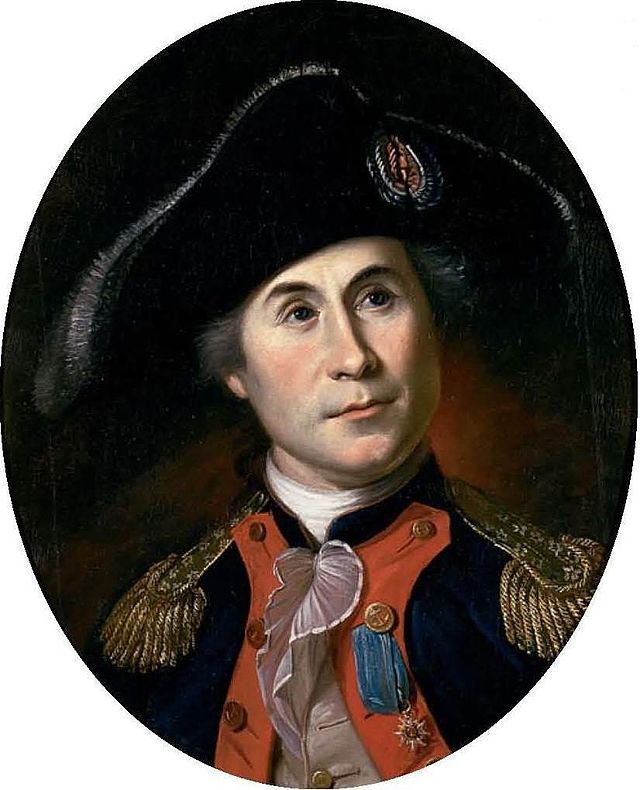
Working his way up through the British merchant marine, Jones spent many years in command, learning the dangerous waters of the Atlantic and beyond. He also had a violent confrontation with a crew member whom he shot and killed in the West Indies. Fleeing the Caribbean for the American colonies, he would later change his surname to “Jones” and try to start a new life without any ties to the incident.
Upon his arrival in the American colonies, he threw himself wholeheartedly into the new world and the opportunities it offered. His maritime experience made him an excellent fit for the Continental Congress’s revolutionary efforts. As the American Revolution began, Jones offered his services to the revolutionary cause. He was commissioned a lieutenant in the Continental Navy in 1775, and with that, the headstrong and confident John Paul Jones would rise through the ranks with haste.
The self-styled “Madcap” was eager for battle, always disciplined and driven to engage the enemy with fierce tenacity. He led several successful raids in Nova Scotia and the Atlantic coast, using the ships Providence and Alfred to make his mark and lead his men. A natural risk-taker and no stranger to challenges, Jones craved pushing the limits with every action he took. His raids would not only target British vessels and merchants, but also hold psychological importance and significance as well.
John Paul Jones had the experience of a skilled seaman and the revolutionary drive of a soldier. He was an excellent fit for the Continental Navy at the beginning of the war. He would further refine his tactics and persona in preparation for the legendary victories that would follow in the near future.
Bold Tactics and Fearless Engagements
Jones was aggressive when it made sense to be. After the American Revolution began in 1775, he would strike at British supply lines whenever the opportunity arose. Serving on ships like the Providence and the Alfred, he made several raids on British merchant ships, capturing them and disrupting the flow of supplies.
He was bold when boldness could change the course of events. In April 1778, in one of the most audacious raids of the American Revolution, Jones led a small party ashore in the port town of Whitehaven, in northwest England. At night, he and his men went into Whitehaven and set fire to British ships in the harbor. While the fire didn’t spread as far as he had hoped, his raid was still effective in terms of igniting fear on the British home front. A U.S. warship had attacked in England, something which had seemed inconceivable just a year before.
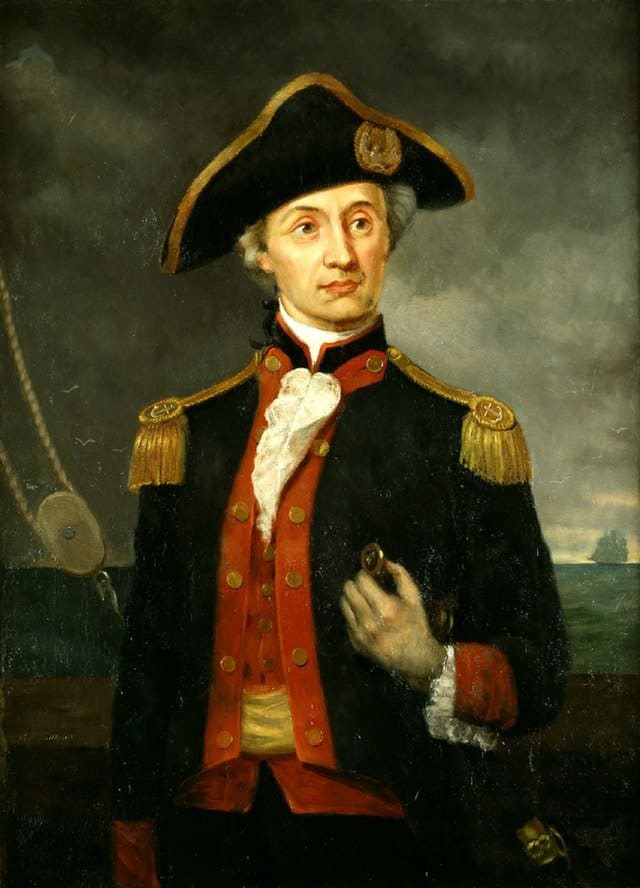
In 1778, Jones was given command of the USS Ranger and set sail for European waters. He captured and destroyed HMS Drake, a British sloop-of-war, after a hard-fought battle off the coast of Ireland. This was the first time a ship in the Continental Navy had won a naval engagement against the Royal Navy in British waters, and the victory was celebrated in the United States. His exploits established him as a celebrated and rising maritime power.
Jones could think outside of the proverbial box. As he once stated, “I wish to have no connection with any ship that does not sail fast; for I intend to go in harm’s way.” He knew that the best way to wage naval warfare was to be fast, daring, and aggressive, and to take advantage of every opportunity to keep up the pressure. He never shied away from taking risks, but instead deliberately placed himself, his men, and his ships in harm’s way, confident in his ability to deliver the best result.
This propensity to take risks when necessary and to break with conventional wisdom when it served the mission was one of the things that set Jones apart from other commanders.
Where other men hesitated, Jones pressed forward. Where other men wanted to play defense, Jones wanted to attack. It was this ability to take risks and win against the odds that turned bold raids and daring ship-to-ship combat into legends. It was this propensity for innovation and action that helped change the perception of what was possible for the Continental Navy.
The Legend of Bonhomme Richard
On the night of September 23, 1779, John Paul Jones, aboard his ship Bonhomme Richard, engaged in one of the most famous battles in American history off the coast of Flamborough Head, England. Jones was at the helm of a small Franco-American fleet, daring to challenge a large British convoy. With Bonhomme Richard, an old converted merchantman, against the new and fully armed HMS Serapis, Jones was far from favored. As the American flag of thirteen stripes rose on the battered Bonhomme Richard, the two ships locked in an epic naval duel, sending shockwaves across the Atlantic.
The battle was fierce and swift. The British broadsides ripped through Bonhomme Richard’s frame, set fires, and maimed and killed dozens of Jones’s men. The ship’s wheel was shattered, the main mast was on fire, and the lower hold was filling with water. “Quarter of an Hour, Sir!” A British officer on Serapis bellowed through a trumpet at one point, asking Jones if he was ready to strike his colors. The American commander, through a haze of smoke and chaos, replied in the most quoted phrase in American naval history, “I have not yet begun to fight!”
The battle raged on as the Bonhomme Richard buckled and shuddered under the weight of the British fire. Although outnumbered and outgunned, Jones’s crew doggedly fought back. Aboard the battered ship, many of the men had been killed, and fires raged in multiple spots. The vessel was taking on water, and the situation was bleak, with many in the crew certain that they were about to be defeated.
In an inspired act of desperation, Jones ordered his men to lash Bonhomme Richard to the Serapis, thwarting any attempt by the British to flee and dragging their prize into close combat. American marines and sailors swarmed over the deck of Serapis. As the battle neared its three-hour climax, the British were decimated, and the men of the Serapis finally struck their colors, offering surrender, and Jones had won the day. The captain of Serapis, Richard Pearson, was shocked at how the tables had turned and surrendered his sword to Jones.
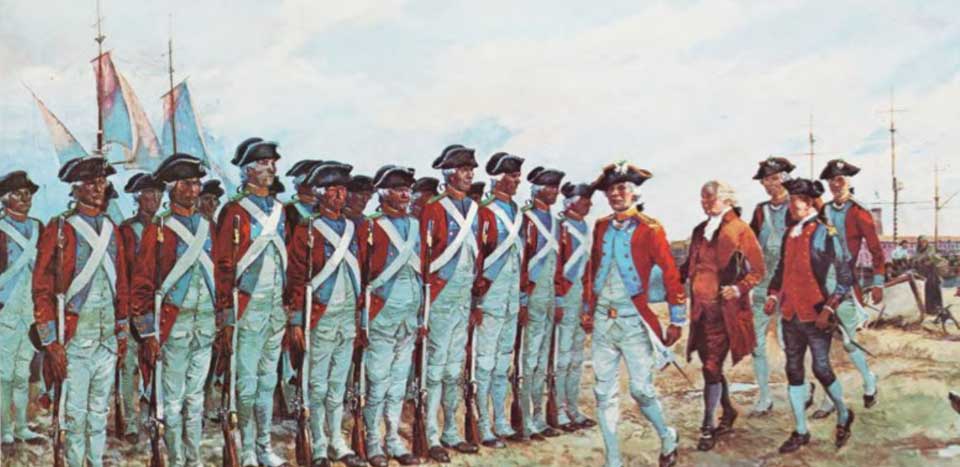
The Bonhomme Richard was effectively done for. It sank not too long after, and the exhausted crew transferred to the prize they had taken, the captured Serapis. The world could hardly believe what it had seen: an underdog victor who had taken on a superior enemy fleet and not only won but captured an enemy ship of greater firepower as a prize to tow behind him.
The battle, however, meant much more to Jones and the still-young United States than just another notch in the win column. It was a symbol of what America was made of, of what the American people could do when they fought to the best of their ability against impossible odds.
The image of the flame-riddled Bonhomme Richard, her ensign of thirteen stripes still proudly waving in the wind, as her guns relentlessly fired at an enemy warship so much larger and more powerful, captured the imagination of Americans and Europeans alike. The victory would become a story of grit, defiance, and bravery against all odds—a story that mirrored the broader war for independence.
This battle and Jones’s immortal words have since become the symbol of the young country’s navy and Jones is remembered as the man who gave the fledgling navy its proudest moment. The battle off Flamborough Head and the legend of Bonhomme Richard are etched in American history, forever memorialized in the folklore of American perseverance and valor.
Legacy in Life and Death
Following the war, there was little work for John Paul Jones to do in the American Navy, which at the time had no real infrastructure and just a handful of ships. As much as he had been acclaimed a national hero and had support in places, political dynamics and divisions limited the positions he could hold. John Paul Jones eventually took a position in the Russian Navy as a rear admiral, receiving his commission from Catherine the Great. Jones sailed with the Russian fleet in its campaign against the Ottoman Empire, but despite a victory, politics, court intrigues, and hostility to foreigners limited John Paul Jones’ naval career in Russia.
Paul Jones returned to Paris, France, to spend the rest of his life, never really regaining the glory that had come for a short time to him, as he lived alone in obscurity. Despite his triumphs, the United States still offered no formal recognition of his service, though he received the respect and admiration of a few men, such as Thomas Jefferson. John Paul Jones did not wish to return to his native land to live in obscurity as an older man, though several offers were made to the old sea captain. He did not return to his home country until he was laid to rest in 1905.
John Paul Jones died on July 18, 1792, at the age of 45, in his Paris apartment. An autopsy was performed, and the cause of death was determined to be nephritis, an illness of the kidney, that had been slowly weakening the sea captain. Paul Jones was buried in a tomb at the Saint Louis Cemetery for Foreign Protestants. There was no family to mourn the sea captain’s loss, and the service and burial were uneventful and somber. John Paul Jones was forgotten quickly, and his grave was lost over time.
In 1905, Ambassador to France Horace Porter searched the cemeteries of Paris and eventually recovered the body of John Paul Jones. He was well preserved in a lead coffin, and forensic examination of his personal possessions enabled proper identification. The admiral’s body was transferred to the U.S. on board the USS Brooklyn and given a naval honor guard. This return trip to his homeland was the recognition that John Paul Jones never received while alive.
John Paul Jones was re-interred with military honors in a tomb in the chapel yard at the United States Naval Academy in Annapolis, Maryland. The memorial is a shrine to his memory and stands as a fitting testament to one of the early heroes of the United States Navy. The man who declared, “I have not yet begun to fight!” is gone now, but enshrined in granite and tradition.
Enduring Icon of Naval Power
To this day, the name of John Paul Jones is associated with the spirit of America’s Navy. Jones is one of the few, often called “The Father of the American Navy,” a title that is sometimes given to John Barry. But it is Jones’s legend that is closest to our people’s hearts. More than just a hero of the new state, he is a symbol of a naval spirit and a warrior’s will.

John Paul Jones’s name is not forgotten by time, and his memory is enshrined in the hearts of those who wear the Naval uniform. There are several statues of John Paul Jones in Washington, D.C., and Annapolis. Several American warships have been named in honor of this remarkable man, including the destroyer USS John Paul Jones, a guided missile ship.
In the United States Navy, the legend’s name is honored through various ceremonies and receptions. In many military units, it is customary to strengthen the warrior spirit in the name of John Paul Jones. The place where Jones rests, his marble tomb in Annapolis, has become a destination of special pilgrimage, a symbol of the hero’s eternal memory.
“The fiery heart and indomitable courage, those will make legends of our men, and the strong will endure forever” were the last words of the Fleet Admiral William D. Leahy. In this spirit, from one end of the country to the other, American officers are taught with the quotes of John Paul Jones: “I have not yet begun to fight!” and “I wish to have no connection with any ship that does not sail fast; for I intend to go in harm’s way”. These phrases are not only associated with the legend of the United States Navy but are also used for training leadership skills.
Books, films, and documentaries are about him. There are times in school and college courses when American children learn in detail about the battles of the American Continental Navy. In the Naval Academy, during the graduation ceremonies, the achievements of each graduate are compared with the stories of John Paul Jones.
In fact, no day passes in the United States without Jones being remembered, revered, and quoted in all his glory. It is this memory, these moments, that keep us studying and remembering the name and deeds of this famous man. John Paul Jones was not only an admiral who won battles. He was a man whose image will always sail under the American flag.
Conclusion: A Legacy Anchored in Valor
John Paul Jones possessed a unique blend of talent, courage, and innovation that established the ideals of the American naval hero. From Scotland to the burning deck of Bonhomme Richard, his life was one of purpose and conviction. His resolve not to surrender, immortalized in the defiant cry, “I have not yet begun to fight!” became more than a moment on the battlefield; it became a rallying cry for a nation.
The legacy of Jones’s victories and ideals continues to inspire military leaders and patriots alike. His story is a reminder that legends are not simply made by triumphs on the battlefield but are forged through an unwavering commitment to something greater than oneself. In remembering John Paul Jones, we honor not just a man but the indomitable spirit of American resilience at sea.

